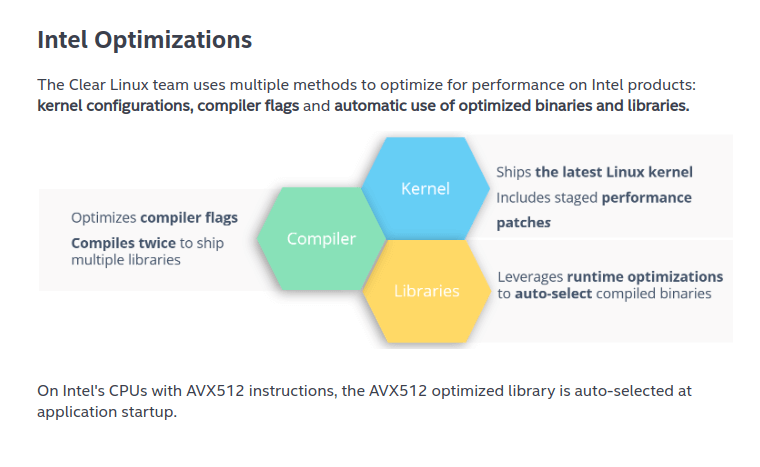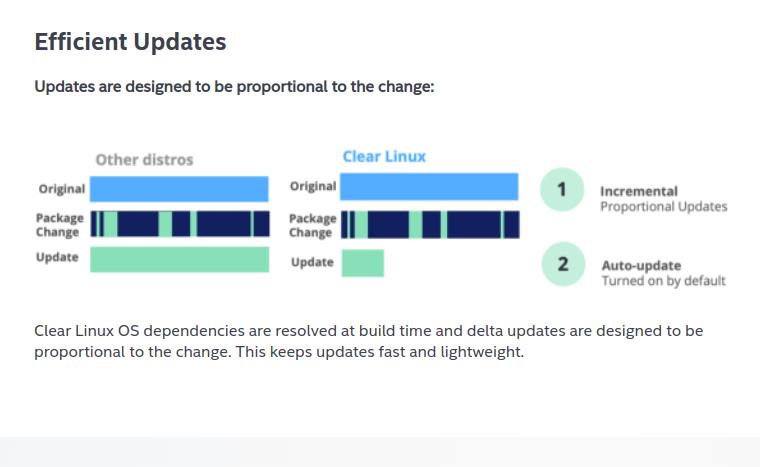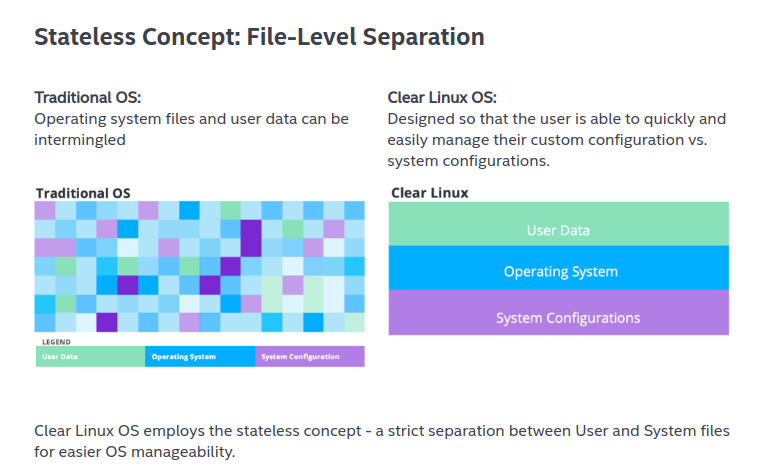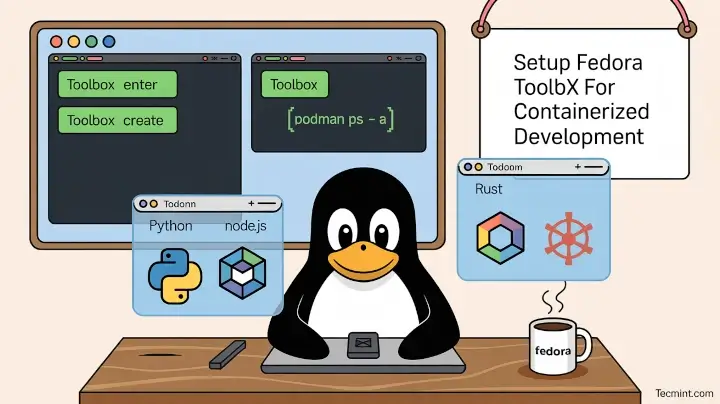Clear Linux OS is the ideal operating system for people – ahem system admins – who want to have a minimal, secure, and reliable Linux distribution. It is optimized for the Intel architecture, which means that running Clear Linux OS on AMD systems will not be an issue.
Clear Linux OS has been developed with an emphasis on security, privacy, consistent updates, and speed which are typically the four must-haves for a functional and reliable server.
Additionally, It comes with a built-in firewall that can be configured in the system preferences. It also has a built-in identity management toolkit and many more features oriented towards the Sysadmin out there that has had enough with mainstream offerings – although the sheer ingenuity baked into the operating system will take some time to discover.
The other advantage of Clear Linux OS is that it does not depend on hardware and is highly optimized for Intel’s architecture with incredible maneuverability added to the mix.
With a rolling release status, it does take a lot to consider initially but if you were to take the brave move of doing an initial test and going through the rest of this article, you will realize that the dream of a functional Clear Linux OS install in your server environment may not be far-fetched after all.
Characteristics of Clear Linux OS
Check out the following characteristics of Clear Linux OS:
Built from Scratch for Intel Chipsets
Purpose-built for the Intel architecture, Clear OS has taken optimization as a primary criterion with the added benefit of being compatible with AMD’s family of chipsets thereby giving every developer the opportunity to enjoy a high-end operating system on almost any kind of hardware configuration.

With a rolling release status, you can also guarantee quick access to updates. From runtime, kernel, math libraries, middleware layers, and frameworks, Clear Linux is optimized through and through.
Cloud to Edge Security
With an automated system that works from the cloud to the edge, CVEs are constantly relegated to obscurity as the majority of threats are mitigated with little change of proliferation.

System Isolation
There’s a clear distinction between user and system files with their corresponding permissions that drastically simplifies the process of configuring your system to your liking without complicating the process like traditional Linux systems do with the dependency hell that tends to ensue.

Scalability
The distribution is highly optimizable with an automated development model and a tool that ensures that over 90% of the components packaged ensure consistency and scalability across the system.

Clear Linux Recommendations
Categorically speaking, Clear Linux is probably the only realistically utilitarian distro for production environments. The alternative for the more user-centric distros is Arch Linux and the majority of flavors that are available under this sub-category.
Running a rolling release distribution on a server is not the standard practice in a production environment. There is a critical distinction in the way the traditional way of updates and rolling release style as specified to Clear Linux works.
As folks over at Intel have illustrated in the image under characteristics -> scalability, the main advantage appears to be a proper separation of system files from user files which in turn simplifies the update process of a rolling release, especially one for a server production environment.
Takeaway
Clear Linux OS is a Linux distribution that’s intended to be more straightforward and easier for people to use. It’s focused on being easy for beginners and those who never had any experience with Linux.
Clear Linux OS doesn’t include everything, but it doesn’t have too much clutter either. There are no unnecessary apps or unnecessary services. Head over to the official Clear Linux website to learn more!







“It is optimized for the Intel architecture, which means that running Clear Linux OS on AMD systems will not be an issue.”
HUH?! How’s that again? If Clear is optimized for Intel then it DOES NOT take AMD features into consideration and WILL NOT run well on AMD.
The article is a word salad that provides little concrete information.
I agree that is a combobulated statement but it does run fine on AMD systems, with no issues and it is very fast as well.
The statement is unnecessary. I don’t know of any Linux distro that is specifically “optimized” for a particular architecture with the exception of DIY distros such as Gentoo, Sorcerer, or LFS. The developer(s) does not know what CPU will be used. If a user wants to optimize a distro, (s)he will compile it.
Well, it didn’t work in my AMD system:
Processors: 2 × AMD E-300 APU with Radeon(tm) HD Graphics
It might be that this CPU is rather old, but then any other distro I’ve tried (currently on KDE Neon Testing) just works. I got a “kernel panic” and some other error message. So… maybe just works in newer AMD systems?